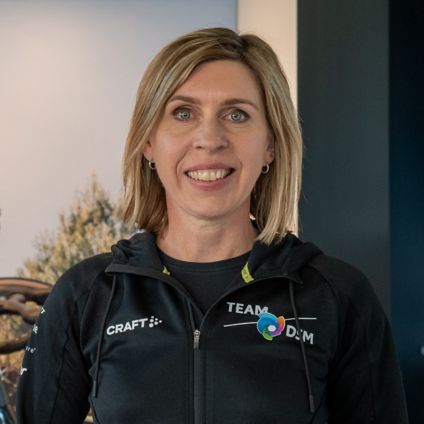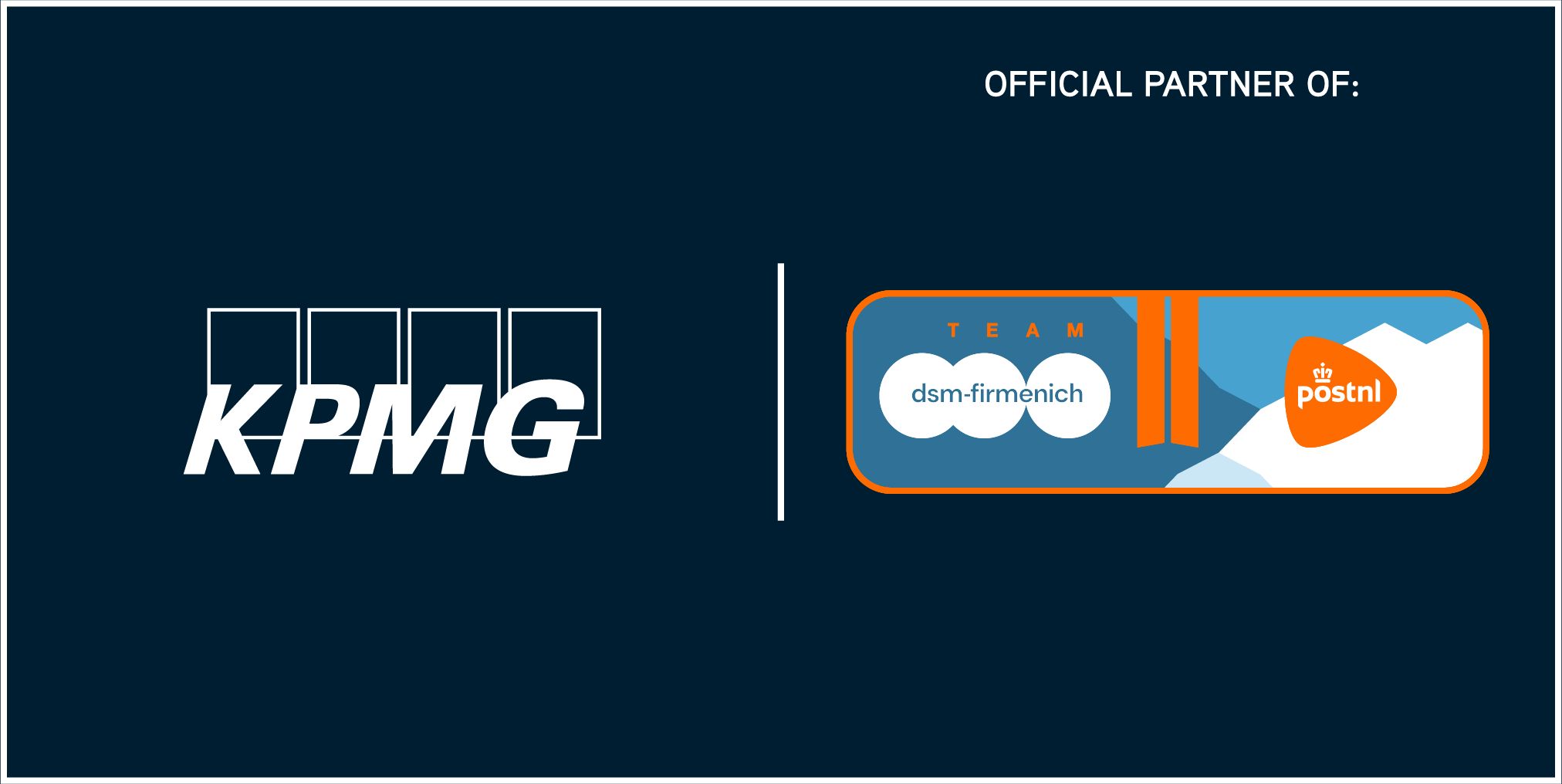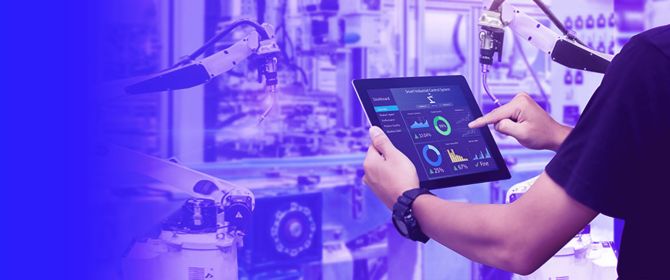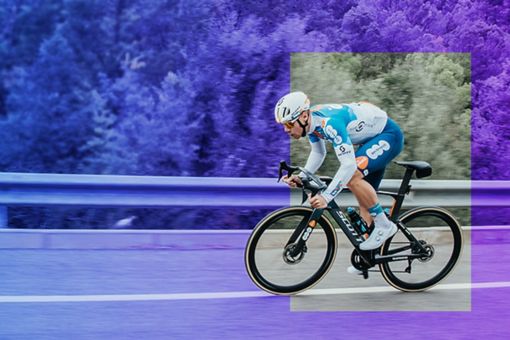KPMG helps Team dsm-firmenich PostNL
Team dsm-firmenich PostNL is a professional cycling team with three programs; a men’s, a women's and a training program. To keep up with the best teams in today's cycling, riding fast and old-fashioned team tactics are no longer enough. Team dsm-firmenich PostNL wants to use a data-driven approach to make better decisions and make the team stronger. Narelle Neumann, Head of Science at Team dsm-firmenich PostNL explains: "One of our goals is to develop all aspects of riders' performance so that they can reach their full potential – as individuals and as part of the team." Achieving this requires the right insights and analysis. That is why KPMG was asked to play a central role in this.
Why KPMG?
KPMG is an international leader in data analytics, with unique expertise in the combined fields of processes, technology, and advanced data analysis. But this is not the only reason why Team dsm-firmenich PostNL chose KPMG. According to Neumann: "In top-level sport, it is not just a question of having the right technology, but also of being able to respond to changing or new situations. For that, you need to be able to think out-of-the-box. Fortunately, they are very good at that at KPMG."
Paul Adriani, Senior manager Digital Transformation in Sports at KPMG Netherlands and lead of KPMG's European Sports Consultancy practice puts KPMG's role this way: "In this assignment, we combine advanced analytics, digital transformation expertise, and software engineering expertise. As a result, we are creating a Digital Transformation Framework with which we improve insights, and thus decision-making and communication between the various expert groups of Team dsm-firmenich PostNL. That is one of the important building blocks of what we at KPMG call a Connected Enterprise."
What was Team dsm-firmenich PostNL's request to KPMG?
Build an integrated data platform with multidimensional data types and different time scales so that Team dsm-firmenich PostNL, based on the insights from the platform, can make more informed decisions. As explained by Adriani: "You have to look at it this way: we support data-driven decision-making during the annual performance planning process. That starts with data analysis to determine the vision, strategy and target for, say, a new cycling season. So that's at team level. Through apps and predictive analytics, the approach for a specific race is formed for 50+ riders for 100+ races." And the great thing is: these analyses can be adjusted at lightning speed during the season, or even just before a race – for example, if a rider is injured.
It's very simple. We have been working with KPMG since 2018. And the cooperation has been very successful. Moreover, the people at KPMG are very passionate and inspiring to work with! Our motto is 'Keep Challenging', and that is exactly what this cooperation contributes to. We look forward to building on it with the people at KPMG.

Using the data platform
The data platform collects and combines thousands of data points from, for example, historical results and stage information. And also importantly, the riders' physical data is continuously tracked in order to optimise their training planning for the races in which they are most likely to succeed.
Dimensions measured on include the following:
- Physical: heart rate and physical test results such as maximum power at different time intervals and critical power, but also, for example, the number of hours of sleep.
- Bike: speed, power and energy.
- Aero: what is the optimal positioning of the rider on the bike, adjusted to the goal of the race or training?
- Nutrition: energy translated to nutrition, translated to optimal weight.
- External factors: such as weather.
- Course: length, decisive moments in the past, steepness of climbs per km and obstacles towards the finish.
- Race information: all race results from the past ten years.
The right insights
Working with KPMG means that you often arrive at new, sometimes surprising and unprecedented insights. Insights that shed a different light on the situation and allow you to make different, better decisions than you would have made without these insights. At Team dsm-firmenich PostNL, for example, this leads to insights showing that a rider who was thought to be a sprinter has much more potential to play a big role in the classics (one-day races). And for that rider, that then leads to a different annual schedule, different forms of training, different nutrition and so on.
Neumann explains: "We have an extensive database documenting riders' performances based on almost 15 years of success at the highest level of professional sport. Based on KPMG's scientific algorithms, we were able to integrate this information and knowledge to gain new insights into the potential of riders, including any riders to be contracted. So, instead of just making decisions based on race results, we can use a range of physical parameters to make much more informed decisions about how a rider will develop and where his or her strengths will lie – whether a sprinter, a classics rider, or a climber."
Concrete actions
According to Paul Adriani: "Our dashboards provide concrete and factual insights. One of the goals of the transformation to a data-driven approach is to provide experts with insights that confirm or disconfirm intuitive decision-making."
And gaining those insights never stops. Continuous measurement of the impact of decisions and whether they lead to performance improvement is important. That, as described above, is about long-term decision-making, i.e. whether someone becomes a climber, a sprinter, or a time-trial specialist. But it is also about elements like the optimal line-up for a race, and also, for example, what the line-up is for the most ideal sprint train. Everything is analysed and considered for optimising the chances of success.
Real solutions
Every decision is about improving and optimising performance. Long-term, short-term, as a team and as individuals. Neumann is satisfied with this approach: "We see that it works. Many talents advance to the top because of this programme.
In addition, take the crucial importance of the balance between energy intake and consumption. Thanks to this programme, we can predict much better how much energy a rider should take in and use, so that he or she performs and recovers optimally day after day. What is especially salient here is that we saw that riders often need to eat less than they think. It took a while to convert their faith in their own intuition into trust in the data. But now they are used to it and are content with it, because they see that it works for them."
Adriani adds: "It is just wonderful to see that, with the data, analyses and insights in hand, you examine sprint tactics with each other and then witness a victory in the bunch sprint together with the team while working. That's more than satisfying, that's just plain cool."
Read more





